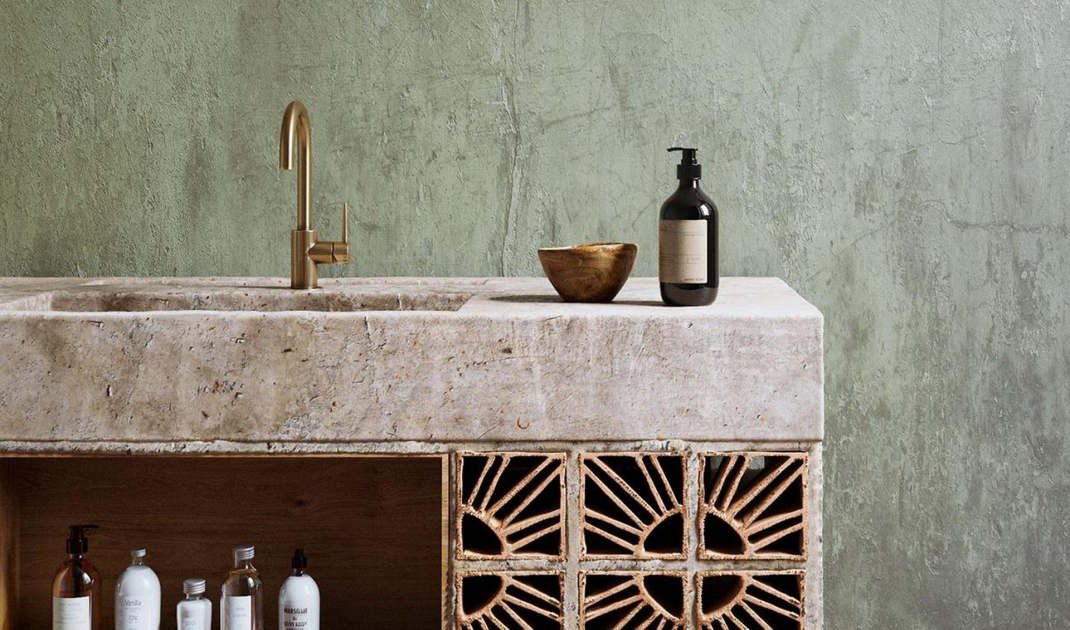In interior design, we are increasingly inclined towards minimalism and simplicity. At the same time, many of us feel a longing for idyllic nature and have a need to maintain harmony with the natural world. Also in the arrangement of the bathroom, therefore, we reach for raw, sometimes even extremely ascetic in appearance details. Such an example would be washbasins made of stone, which, despite their simplicity, provide us with sufficient comfort, as well as a touch of luxury and definitely remarkable aesthetics.
By their very nature
Thirsty for nature, with the help of a stone washbasin, we can create in our own homes an atmosphere that is not only original, but also refined. Some models will add a touch of imperfection, which will become a balance for the refined details in the interior. Others, on the other hand, will stand out with their nobility against the background of a sparing environment. The effect depends on what type of basin we install and in what context. These devices are available in a wide variety of colors, shapes and designs.
Stone washbasin with a raw look
Basin in natural form
The washbasin in the least intrusive version of nature's product is a stone hollowed and smoothed only on the inside. Its nonchalant expression will play perfectly in interiors in loft style, rustic style, in the vicinity of a brick wall, brass elements and in arrangements using wooden, concrete or clay elements.
Therocky and rough texture can also exist as a contrast to thickly glazed ceramic tiles, or a satin-finish surface made of micro-concrete.
Extremely important here is the color scheme, which would oscillate most safely around earth tones.
A stone basin amidst fluted tiles and a marble basin with a similar aesthetic motif.
A basin sanded overall
A more conservative and versatile look has basins subjected to full polishing. They can be made of marble, travertine, andesite, onyx or sandstone. Most often they are hollowed out of a single block of stone. Among the offerings you will also find those with field and river stone embedded in resin. Some of the more decorative ones may have sections decorated with a mosaic of different materials.
Washbasins made of oknyx and travertine
© Pinterest/Lux4home
Marble, onyx and travertine
The washbasins have an extremely interesting and unique appearance, as the history of its creation is more clearly visible in the rock than in other materials. The patterns are therefore interesting and unique.
Marble was formed by the transformation of limestone and dolomite under the influence of high temperature and pressure. It is a very hard and durable creation that can withstand low and very high temperatures well. Its pattern, characteristic fuzzy veins, decorate it quite regularly and densely. The material can be found in light, creamy shades, also in browns, blacks and even greens.
Onyx, on the other hand, is covered with more fanciful color patterns. It is very decorative and has the ability to let light through. Thus, it is very often used in interior design, not only for sanitary elements, but also for the creation of fireplaces, tiles and panels.
Travertine, on the other hand, is a sedimentary rock, composed of calcite and aragonite. It is the result of the precipitation of calcium carbonate, when groundwater rises to the surface. It is mined mainly in Mediterranean countries. This rock has a fine-grained, sand-like structure and pores, sometimes very large, arranged linearly. Sinks made of travertine look extremely noble, and at the same time emphasize the warm interior design.
Sinks made of stone, smoothly finished inside
© Pinterest/CICO Books
Proper maintenance of stone
A stone basin is a product that will serve us for many years, but it is important to remember about proper and systematic impregnation. Without this, the natural stone could absorb all sorts of chemicals that we use on a daily basis, and damage the structure and color of the basin. Impregnation coatings tightly fill the channels and pores.
Gentle substances such as dishwashing liquid or soap should be usedin daily care. Also, dirt should not be allowed to remain too long, as this can lead to discoloration.
It is worth knowing that in the event of permanent surface damage, the sanitary element can be restored by re-sanding.
Elaboration: Liwia Sus






































